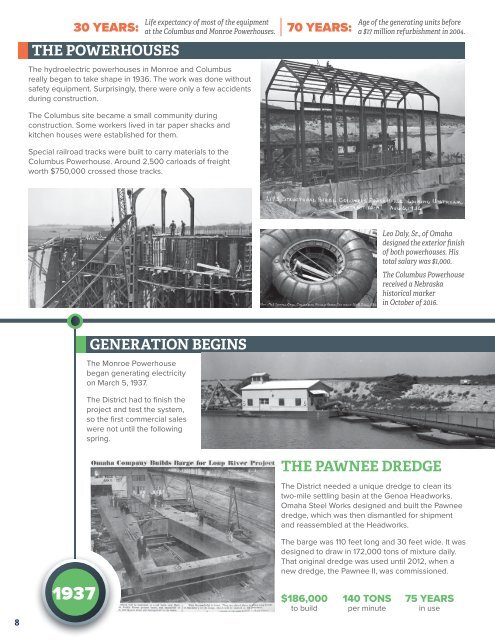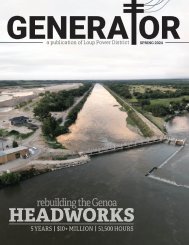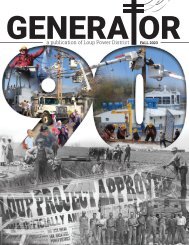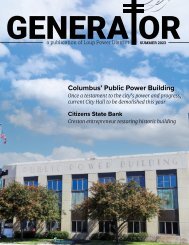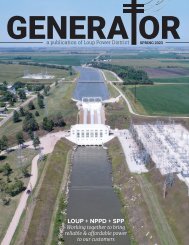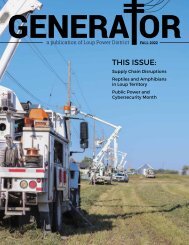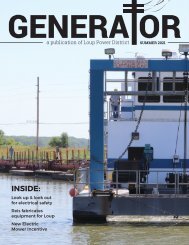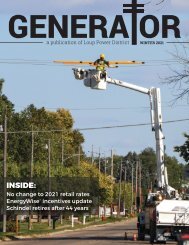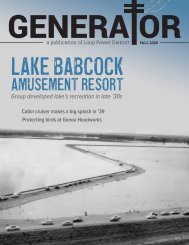Fall 2018 Generator
Loup celebrates 85 years of history this year. Learn more about the first public power district in Nebraska and how it shaped public power throughout the state and nation.
Loup celebrates 85 years of history this year. Learn more about the first public power district in Nebraska and how it shaped public power throughout the state and nation.
You also want an ePaper? Increase the reach of your titles
YUMPU automatically turns print PDFs into web optimized ePapers that Google loves.
30 YEARS:<br />
THE POWERHOUSES<br />
Life expectancy of most of the equipment<br />
at the Columbus and Monroe Powerhouses.<br />
The hydroelectric powerhouses in Monroe and Columbus<br />
really began to take shape in 1936. The work was done without<br />
safety equipment. Surprisingly, there were only a few accidents<br />
during construction.<br />
The Columbus site became a small community during<br />
construction. Some workers lived in tar paper shacks and<br />
kitchen houses were established for them.<br />
Special railroad tracks were built to carry materials to the<br />
Columbus Powerhouse. Around 2,500 carloads of freight<br />
worth $750,000 crossed those tracks.<br />
70 YEARS:<br />
Age of the generating units before<br />
a $17 million refurbishment in 2004.<br />
Leo Daly, Sr., of Omaha<br />
designed the exterior finish<br />
of both powerhouses. His<br />
total salary was $1,000.<br />
The Columbus Powerhouse<br />
received a Nebraska<br />
historical marker<br />
in October of 2016.<br />
GENERATION BEGINS<br />
The Monroe Powerhouse<br />
began generating electricity<br />
on March 5, 1937.<br />
The District had to finish the<br />
project and test the system,<br />
so the first commercial sales<br />
were not until the following<br />
spring.<br />
8<br />
1937<br />
THE PAWNEE DREDGE<br />
The District needed a unique dredge to clean its<br />
two-mile settling basin at the Genoa Headworks.<br />
Omaha Steel Works designed and built the Pawnee<br />
dredge, which was then dismantled for shipment<br />
and reassembled at the Headworks.<br />
The barge was 110 feet long and 30 feet wide. It was<br />
designed to draw in 172,000 tons of mixture daily.<br />
That original dredge was used until 2012, when a<br />
new dredge, the Pawnee II, was commissioned.<br />
$186,000<br />
to build<br />
140 TONS<br />
per minute<br />
75 YEARS<br />
in use


